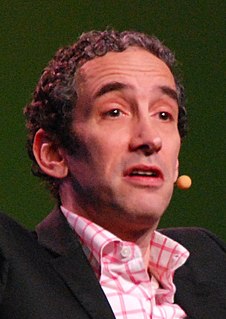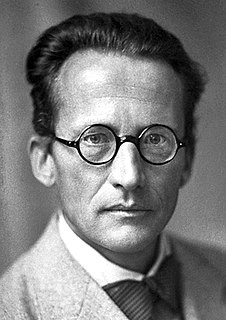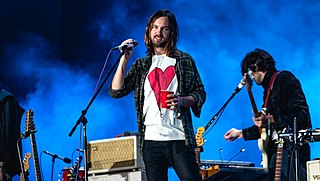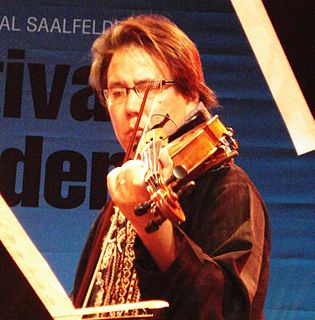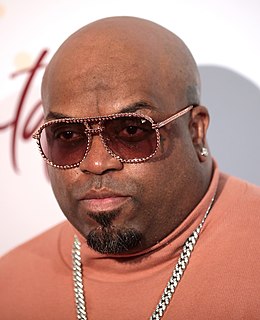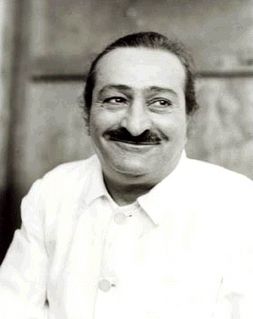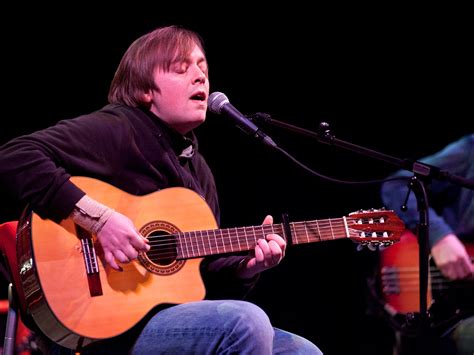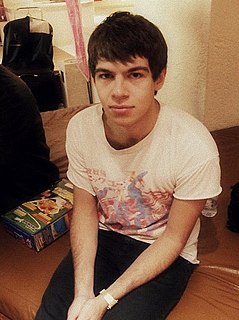A Quote by Douglas Rushkoff
More than anything, rave was an intentionally designed experience. The music, lighting, and ambience were all fine-tuned to elicit and augment altered states of consciousness. The rhythm of the music was precisely 120 beats per minute, the frequency of the fetal heart rate, and the same beat believed to be used by South American shamans to bring their tribes into a trance state. Through dancing together, without prescribed movements, or even partners, rave dancers sought to reach group consciousness on a level they had never experienced before.
Quote Topics
Altered
Altered States
Altered States Of Consciousness
Ambience
American
Anything
Beat
Beats
Before
Believed
Bring
Consciousness
Dancers
Dancing
Designed
Elicit
Even
Experience
Experienced
Fine
Frequency
Group
Had
Heart
Heart Rate
Intentionally
Level
Lighting
Minute
More
More Than Anything
Movements
Music
Never
Partners
Per
Precisely
Rate
Rave
Reach
Rhythm
Same
Sought
South
South America
State
States
States Of Consciousness
Than
Through
Together
Trance
Tribes
Tuned
Used
Were
Without
Related Quotes
When I finally turned 18, I started to wonder if rave was now different to what it was and whether I'd missed out on the golden days of rave. So, I thought I'd talk to some of the legends in the game and get an education on how music was made, listened to and the rave scene from before I was even born.
Consciousness is never experienced in the plural, only in the singular. Not only has none of us ever experienced more than one consciousness, but there is also no trace of circumstantial evidence of this ever happening anywhere in the world. If I say that there cannot be more than one consciousness in the same mind, this seems a blunt tautology - we are quite unable to imagine the contrary...
The great Initiates in the spirit world have vast and imposing plans for the musical future. What is this plan? It is to use music as an occult medium through which to develop altered states of consciousness, psychic abilities, and contact with the spirit world. Music in the future is to be used to bring people into yet closer touch with the devils; they will be enabled to partake of the beneficial influence of these beings while attending concerts at which by the appropriate type of sound they have been invoked.
I loved dancing with a delirious 'I wish I could die' passion, especially when the music appealed to me ... but alas! only one in ten partners had any notion of time, and what made it worse, the nine were always behind, never before the beat. ... Sometimes I would firmly seize smaller, lighter partners by the scruff of the neck, so to speak, and whirl them along in the way they should go, but I saw they were not enjoying themselves, and oddly enough I wanted these wretches to like dancing with me.
Avataric periods are like the spring-tide of creation. They bring a new release of power, a new awakening of consciousness, a new experience of life - not merely for a few, but for all. Qualities of energy and awareness, which had been used and enjoyed by only a few advanced souls, are made available for all humanity. Life, as a whole is stepped up to a higher level of consciousness, is geared to a new rate of energy. The transition from sensation to reason was one such step; the transition from reason to intuition will be another.
It's very interesting to read why Cornelius Cardew became disenchanted with academic avant-garde music. He wanted to reach as many people as possible and change their consciousness. He wanted to reach the "working classes" in England. The kind of music he was making was very much from the academy, even though it had a lot in common with things like free jazz and improvisation, and he felt that it was the music of the elite, and that he wasn't really speaking to the people.
Early American music and early folk music, before the record became popular and before there were pop stars and before there were venues made to present music where people bought tickets, people played music in the community, and it was much more part of a fabric of everyday life. I call that music 'root music.'
